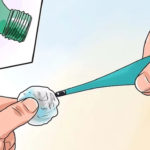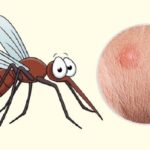Heat exhaustion is a common occurrence during the summer months, especially for those who work or spend prolonged periods outdoors. Dr. Huynh Tan Vu, head of the Day Treatment Unit at Ho Chi Minh City University of Medicine and Pharmacy Hospital, explains that heat exhaustion occurs when the body’s core temperature rises due to excessive heat exposure.
The high outdoor temperatures and intense summer sun can lead to heat-related illnesses such as heat exhaustion and heatstroke. These conditions can be life-threatening and cause neurological damage, with some cases resulting in subdural hematoma and intracranial hemorrhage.
One of the most noticeable signs of heat exhaustion is an elevated body temperature, which leads to increased sweating and significant fluid loss. If left untreated, the body’s circulation can collapse, leading to cardiovascular collapse, severe electrolyte disturbances, and even death. Additionally, the high body temperature can disrupt the normal functioning of vital organs, including the cardiovascular, respiratory, and nervous systems.
According to Dr. Vu, the symptoms of heat exhaustion and heatstroke can vary depending on the severity and duration of the condition. Initial mild symptoms may include increased heart rate, rapid breathing, anxiety, fatigue, dizziness, headache, weakness, mild agitation, and progressive shortness of breath. If not addressed promptly, these symptoms can progress to fainting, coma, cardiovascular collapse, and death.

Applying cold compresses or ice packs to the neck, armpits, and groin can help lower body temperature quickly. Photo: Examiner.
When encountering someone experiencing heat exhaustion, it is crucial to take immediate action to lower their body temperature. Move the person to a cool and well-ventilated area, remove excess clothing, and provide them with cool water with added salt. Apply cold compresses or ice packs to areas where large arteries are close to the skin’s surface, such as the armpits, groin, and neck.
If the person is unconscious, unable to drink, or vomiting continuously, along with persistent high fever, abdominal or chest pain, and difficulty breathing, seek immediate medical attention. During transportation, continue to apply cold compresses to help lower their body temperature.
At a medical facility, the patient will receive intravenous fluids to replenish lost fluids and electrolytes, along with other supportive measures as needed, depending on their condition.
Dr. Vu recommends some simple and effective traditional remedies to help treat heat exhaustion and heatstroke. For instance, mixing powdered arrowroot with cooled boiled water and adding some sugar can help cool the body. Additionally, you can use certain fruits and vegetables: blend a piece of peeled bitter gourd and drink the juice with a pinch of salt; cook a fresh bitter melon after removing the seeds and drink the water; or drink juices or extracts from watermelon, cucumber, or sugarcane. Crushing perilla and plantain leaves and mixing them with water can also help cool the body and relieve heat exhaustion symptoms.
“Even after recovery, it is advisable to rest for a few days to allow the body to fully recuperate,” advises Dr. Vu.
To prevent heat exhaustion and heatstroke during the summer, Dr. Vu suggests avoiding prolonged outdoor activities, especially in direct sunlight or hot environments. Stay hydrated by drinking plenty of fluids, and always wear protective clothing, including a hat and sunglasses, when working outdoors.

Drinking sugarcane juice, fruit juices, or diluted arrowroot water is an effective way to treat heat exhaustion. Photo: Sugarcaneisl.
Thu Anh






































